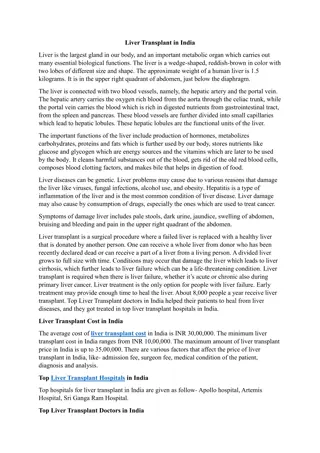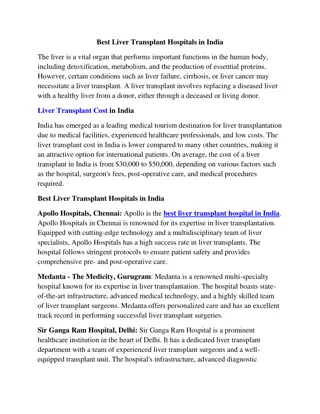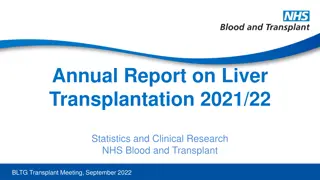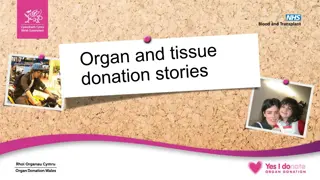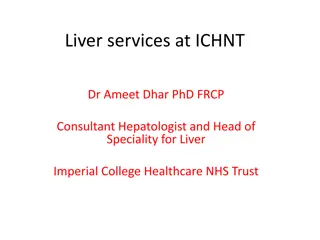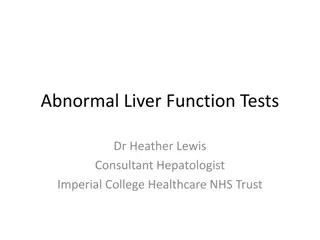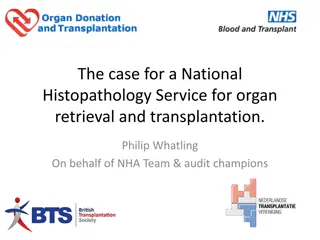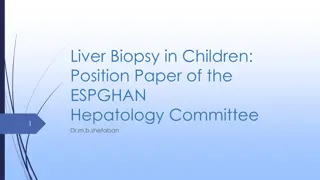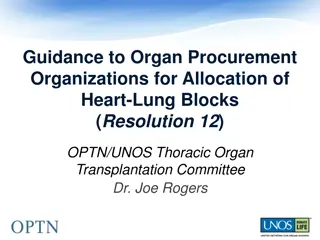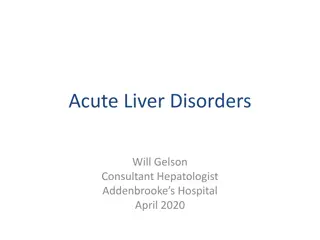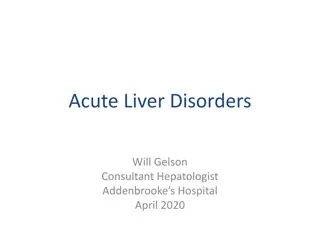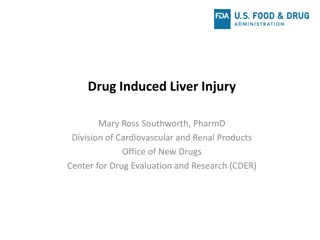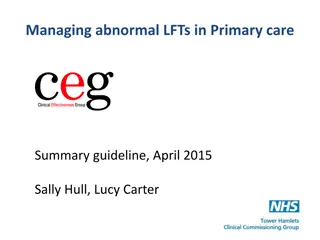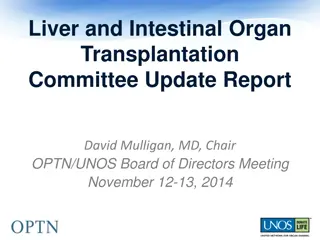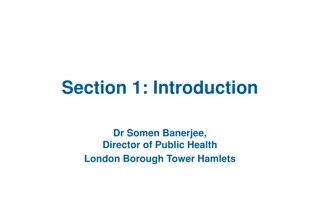Recent Liver Organ Transplantation Policy Updates
Policy updates for liver and intestinal organ transplantation including automatic approval of HCC exceptions, down-staging criteria, public comment proposals, and liver distribution enhancements. Changes implemented in 2017 and 2018 aim to improve organ allocation and treatment eligibility.
Download Presentation

Please find below an Image/Link to download the presentation.
The content on the website is provided AS IS for your information and personal use only. It may not be sold, licensed, or shared on other websites without obtaining consent from the author.If you encounter any issues during the download, it is possible that the publisher has removed the file from their server.
You are allowed to download the files provided on this website for personal or commercial use, subject to the condition that they are used lawfully. All files are the property of their respective owners.
The content on the website is provided AS IS for your information and personal use only. It may not be sold, licensed, or shared on other websites without obtaining consent from the author.
E N D
Presentation Transcript
Liver and Intestinal Organ Transplantation Committee Spring 2018 1
Recent Policy Implementation: Automatic Approval of HCC Exceptions Policy implemented December 12, 2017 Upper limit of AFP 1,000 that is allowed for standard MELD exception (may be treated, and if responds to below 500, also eligible) Standardized down-staging policy uniform across regions: patients who present outside of T2 criteria but within down-staging criteria now eligible for standard MELD exception if they are successfully treated and demonstrate a reduction of tumor burden to within T2 criteria. 2
Recent Public Comment Proposals Modification to Hepatocellular Carcinoma (HCC) Extension Criteria Proposal provides automatic extension of a HCC exception score for candidates with HCC lesions who met criteria for T2 at initial application, who subsequently fall below T2 lesion criteria at time of their extension because of liver-directed therapies. Intended to revise an effect of HCC down-staging policy implemented Dec 12, 2017 whereby candidates with existing HCC appeals, who were treated to below T2, were no longer auto- approved at next extension. Supportive public comment Implemented Feb. 5, 2018 3
Recent policy approval: Enhancing Liver Distribution Approved by Board - Dec 2017 Broadened distribution within region and circle- Share 32 Proximity circle is a 150 nautical mile radius around the donor hospital Circles may extend out of the region Adult candidates within the region and/or circle with calculated score 32 or higher (including proximity points) are included in the initial broader distribution Pediatric candidates within the region and/or circle based allocation MELD or PELD of 32 4
Recent policy approval: Enhancing Liver Distribution 3 MELD or PELD points to candidates within the circle or the DSA Separate allocation for DCD donors and donors at least 70 years old DCD donors and donors at least 70 years old will be allocated first to the DSA after the status 1 candidates. Implementation expected for end of 2018 Multiple educational offerings will be provided in advance of implementation 5
Upcoming Policy Implementation: NLRB To be implemented prior to changes with liver distribution Expected for Fall 2018 NLRB Establishes a NLRB with 3 specialty review boards Scores for standardized exceptions will be tied to the median MELD at transplant in the DSA Implementation will occur in phases Instructional offerings will be provided to help members prepare for impact of these policy changes 6
NLRB: Structure NLRB is comprised of 3 specialty review boards Adult HCC Adult Other Diagnosis Pediatrics Representation Every liver transplant program may appoint a representative Reps Responsibilities Reps must vote within 7 days on all exception requests Non-responsiveness may result in suspension of program s participation in NLRB 7
NLRB: Structure Voting Exception request is randomly assigned to five reps of the appropriate board Appeal Process The same five reps of the original request review the appeal ART If appeal is denied, a conference call may be requested with the Appeals Review Team (ART) All NLRB members are assigned to serve one month each year on the ART (9 member teams, require 5 for quorum). Conference calls will be held at a fixed day each week and cancelled only if there are no cases Following ART denial, program may initiate final appeal to the Liver Committee 8
NLRB: Details Changes how cases are reviewed and scores awarded Median MELD at transplant (MMaT) score by DSA, minus 3 points, will be the default score for many candidates with standard exceptions Eliminates the MELD elevator NLRB will review non-standard exception requests Typically related to the MMaT Guidance documents have been created to help the NLRB and to help centers and these can be found on the OPTN website 9
NLRB: Details MMaT Calculation OPTN will re-calculate MMaT every 180 days using the previous 365-day cohort. At 180 day update, candidates with existing standardized score exceptions will be adjusted 10
Adult Standard Exception Points Diagnosis Current Exception Points Assignment Recommended Proposed Exception Points Assignment MMaT 3 for DSA Cholangiocarcinoma MELD 22 (w/ 10% point escalator) MMaT 3 for DSA Cystic Fibrosis MELD 22 (w/ 10% point escalator) MMaT 3 for DSA Familial amyloid polyneuropathy MELD 22 (w/ 10% point escalator) MELD 40 for DSA Hepatic artery thrombosis MELD 40 MMaT 3 for DSA Hepatopulmonary syndrome MELD 22 (w/ 10% point escalator if PaO2 remains under 60 mmHg) MMaT 3 for DSA Portopulmonary hypertension MELD 22 (w/ 10% point escalator if repeat heart cath shows MPAP <35) MMaT for DSA Primary Hyperoxaluria MELD 28 (w/ 10% point escalator) MMaT - 3 for DSA (after delay) HCC Delay 6 months, then 28, 30, 32, 34 MMaT = Median MELD at Transplant 11
Pediatric Standard Exception Points for Candidates 12-17 years old Diagnosis Current Exception Points Assignment Recommended Proposed Initial Exception Points Assignment for 12-17 year olds MELD 22/PELD 28 (w/ 10% elevator) MMaT for DSA Cholangiocarcinoma MELD 22/PELD 28 (w/ 10% elevator) MMaT for DSA Cystic Fibrosis MELD 22/PELD 28 (w/ 10% elevator) MMaT for DSA Familial amyloid polyneuropathy MELD or a PELD 40 Hepatic artery thrombosis (not meeting 1A criteria) Hepatopulmonary syndrome MELD 40 MELD 22/PELD 28 (w/ 10% elevator) MMaT for DSA MMaT for DSA, then 1B after 30 days Metabolic Disease MELD/PELD 30, then status 1B after 30 days MELD 22/PELD 28 (w/ 10% elevator) MMaT for DSA Portopulmonary hypertension MELD 28/PELD 41 (w/ 10% elevator) MMaT for DSA + 3 Primary Hyperoxaluria MELD or a PELD 40 HCC MELD 28/PELD 41 (w/ elevator) 12
Pediatric Standard Exception Points for Candidates < 12 years old Diagnosis Current Exception Points Assignment Recommended Proposed Initial Exception Points Assignment for less than 12 year olds Cholangiocarcinoma MELD 22/PELD 28 (w/ 10% elevator) MMaT for region Cystic Fibrosis MELD 22/PELD 28 (w/ 10% elevator) MMaT for region Familial amyloid polyneuropathy Hepatic artery thrombosis (not meeting 1A criteria) Hepatopulmonary syndrome MELD 22/PELD 28 (w/ 10% elevator) MMaT for region MELD 40 PELD 40 MELD 22/PELD 28 (w/ 10% elevator) MMaT for region Metabolic Disease MELD/PELD 30, then status 1B after 30 days MELD 22/PELD 28 (w/ 10% elevator) MMaT for region MMaT for region, then 1B after 30 days Portopulmonary hypertension Primary Hyperoxaluria MELD 28/PELD 41 (w/ 10% elevator) MMaT for region + 3 HCC MELD 28/PELD 41 (w/ elevator) PELD 40 13
Questions? Julie Heimbach, MD Committee Chair Heimbach.Julie@mayo.edu Matt Prentice, MPH Committee Liaison Matthew.Prentice@unos.org 14


